By: Steve Barber, VP of Product Management and Sirisha Machiraju, Director of Product Management
In the ever-evolving world of logistics, one truth remains constant: no two supply chains are alike. Each presents its own set of challenges and complexities. As global trade grows more intricate, and customer expectations rise, the need for a Transportation Management System (TMS) that is as dynamic and adaptable as the supply chains it serves has never been more critical.
The need for a dynamic, adaptable TMS
Traditional TMS solutions, many of which date back to the 1990s, have struggled to keep pace with the rapid changes in logistics. While the logistics landscape has been transformed by technological disruption, the underlying architecture of many TMS platforms remains brittle, making them difficult to adapt and scale. This rigidity hinders transportation teams, forcing them to navigate cumbersome setups and outdated processes, when what they really need are tools that are intuitive, responsive, and customizable.
For modern shippers, the ability to evolve is non-negotiable. Supply chains are not static; they grow, change, and adapt over time. Therefore, a one-size-fits-all TMS simply doesn’t cut it in today’s environment. At Uber Freight, we recognize that modern shippers need a system that not only meets their current needs but also drives and supports their growth.
Uber Freight’s TMS fuses 20+ years of shipper-focused tech expertise with Uber’s cutting-edge innovation approach, delivering best-in-class solutions that combine disruptive thinking with industry-leading experience for enterprise customers. The result? A more secure, reliable, smarter, and faster TMS that is built to evolve—one that adapts to the unique requirements of each shipper and empowers logistics teams to thrive in an increasingly complex environment.
Reimagining the TMS: Uber Freight’s vision for the future
We’re not just enhancing our TMS; we’re reimagining what a TMS can be. Since Deliver 2023, our roadmap has been clear: to lead the way in developing a TMS that truly serves the needs of modern shippers across the entire freight lifecycle with immediate, lasting, and differentiated value through our extensive platform.
Building on the vision outlined last year, we’ve made significant strides in transforming our TMS into a customizable, extensible, and flexible platform. This is more than just a series of updates; it’s about creating a solution that adapts to the unique requirements of each shipper, no matter how complex their supply chain may be.
A closer look at the new features
So, what exactly makes this new TMS so different? Here’s a breakdown of the key enhancements, some of which are available now, while others will be rolled out over the coming months:
Control Tower & Tracking Portal: The Control Tower will now be the first thing users see upon logging in, transforming the TMS home page from a navigation tool into a streamlined and informative landing page, enabling quicker access to critical information so teams can proactively address potential issues before they impact your end customer. We’ve also updated the Tracking Portal’s user interface, aligning it with the Load Details page within our TMS to create a seamless, unified interface. This redesign resolves past inconsistencies between vendors and TMS users, ensuring everyone is on the same page in the most visible area of the product—where our customers and their vendors interact most.
Intuitive Dock Scheduler: We’ve enhanced Dock Scheduler with user-driven updates, including simplified setup and real-time tracking, to streamline operations for warehouse teams. These improvements reduce bottlenecks and delays, cutting costs and improving service efficiency. 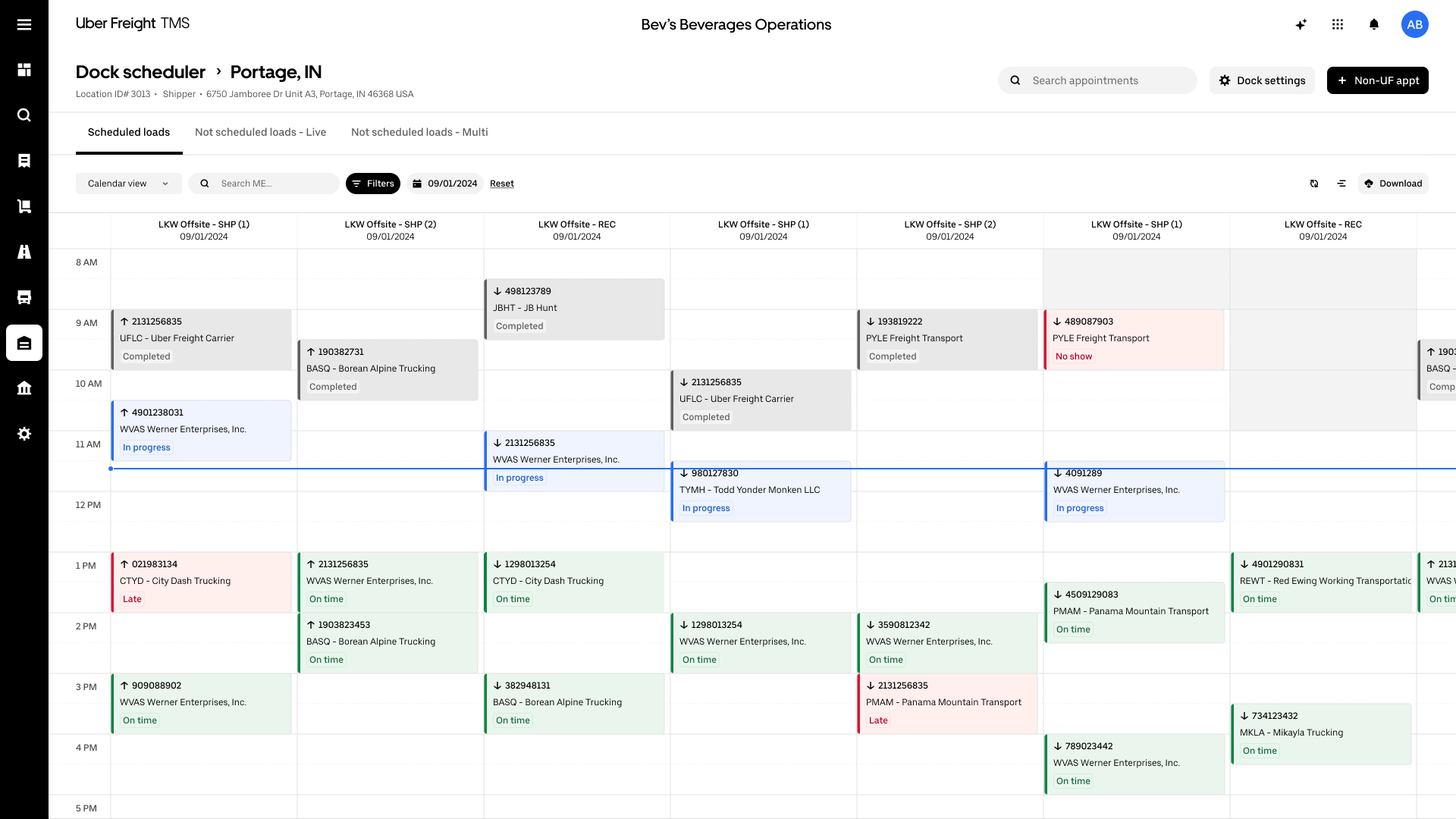
Seamless rate and lane integration: We’re redesigning our Routing Guide interface to simplify maintenance based on shippers’ evolving business intelligence and carrier performance metrics. The refreshed UI enables frictionless updates, while a unified platform provides consistent ratings across all modes and channels. With data-driven forecasting, automation, and insights, shippers can reduce spend, manage carriers more effectively, and adapt seamlessly to changing demands.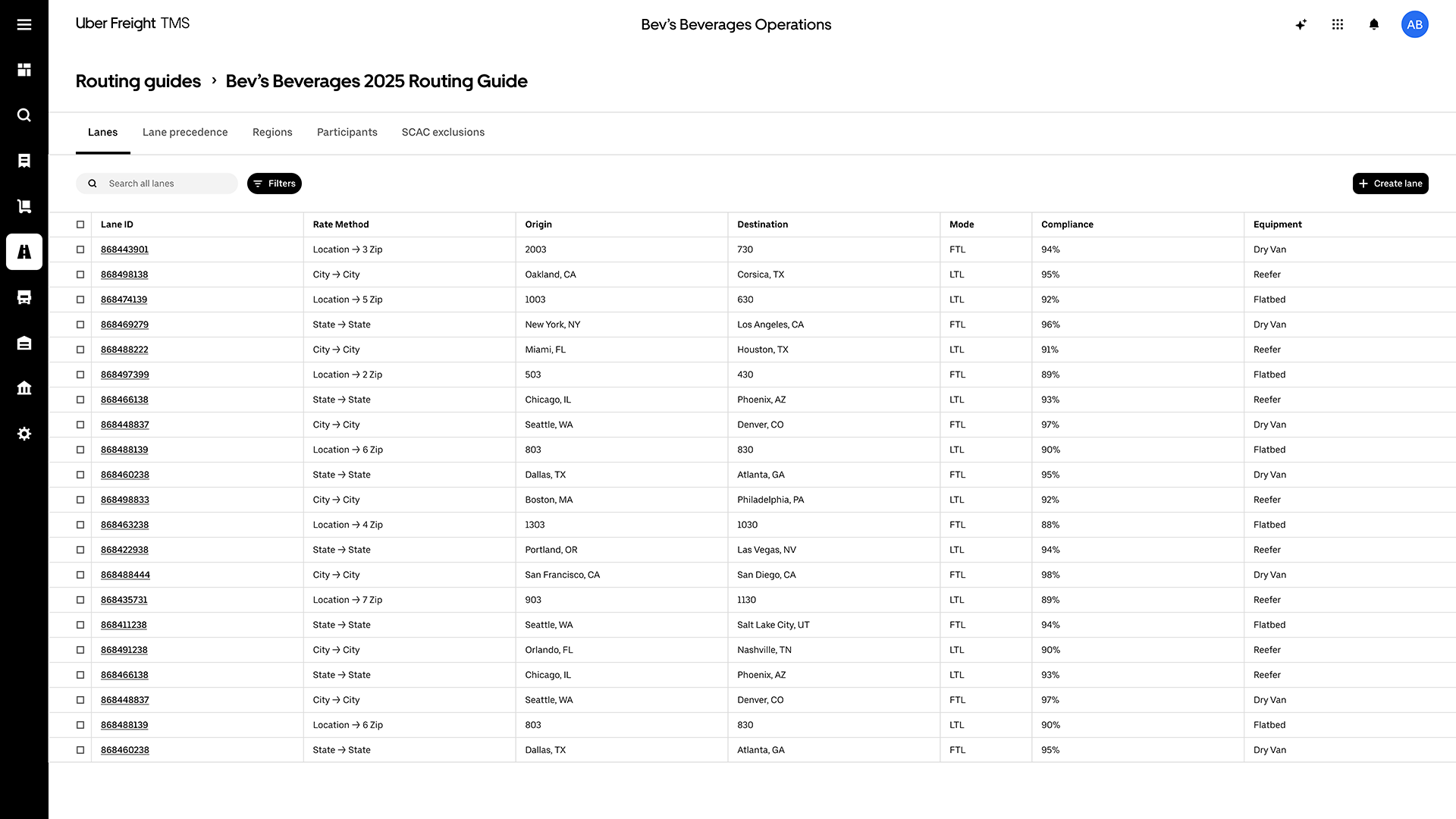
Streamlined order and shipment entry: To reduce entry time and errors—while also enhancing supplier onboarding and management—we’ve minimized order entry and shipment setup time through intuitive order and shipment initiation and integrated product lookup. In just a few steps, you can enter required information from modes and carriers to routes and integrated rate comparisons. 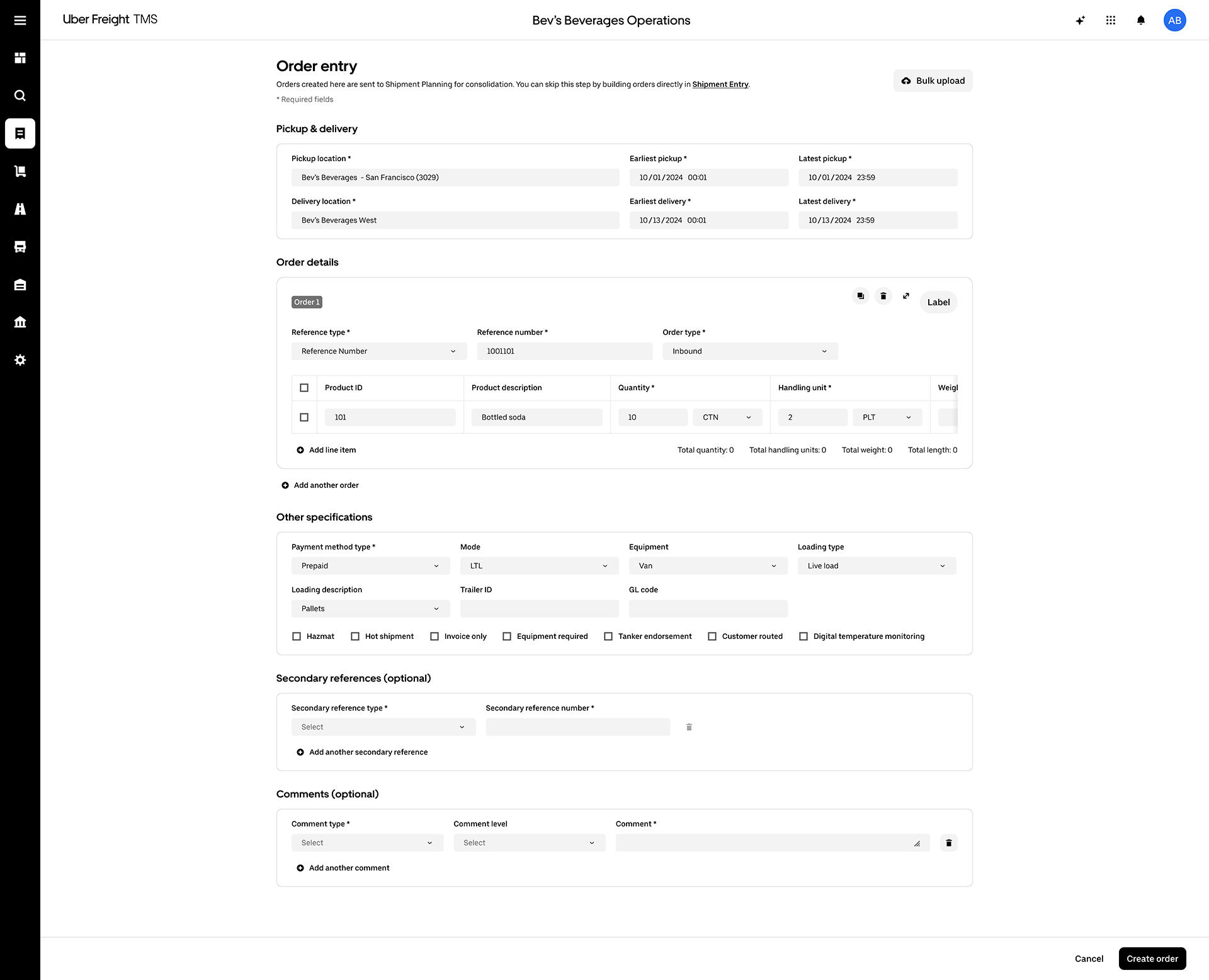
Enhanced location data handling: A streamlined, network-customized data repository now offers quick, accurate access to location data and comprehensive facility performance overviews. This enhancement ensures safety, improves data accuracy, and facilitates smoother appointment scheduling while reducing manual entry and errors. 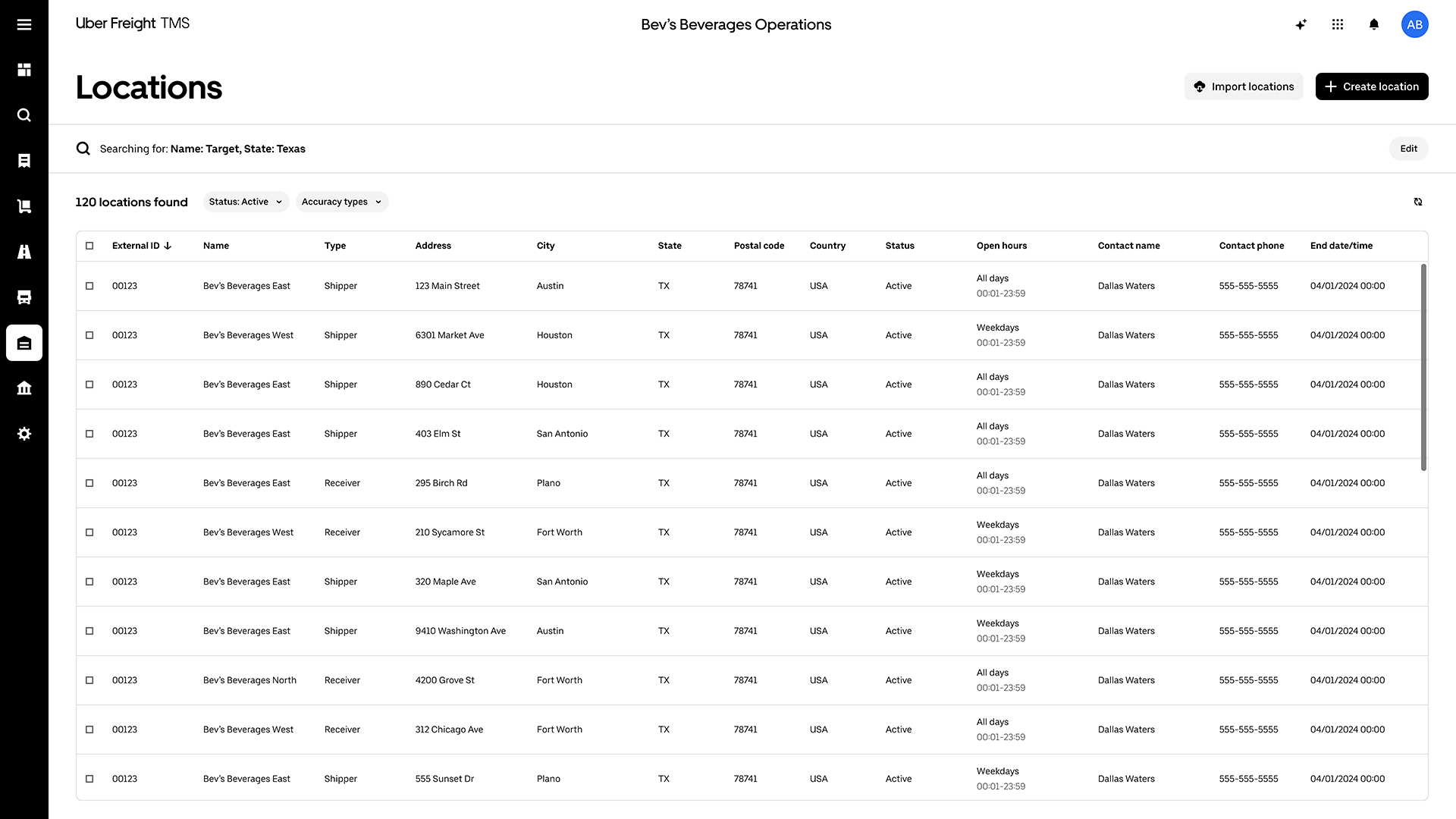
Simplified financial management tools: Customizable financial boards now simplify oversight, giving transportation teams the insights they need to make informed decisions. The improved UX streamlines end-to-end AR & AP workflows, while enhanced freight spend visibility and forecasting are available at both the managerial and organizational levels. With streamlined accessorial management via carrier self-service for rate discrepancies and API and intelligent OCR-driven FAP audits, carrier payment processes are more efficient than ever. 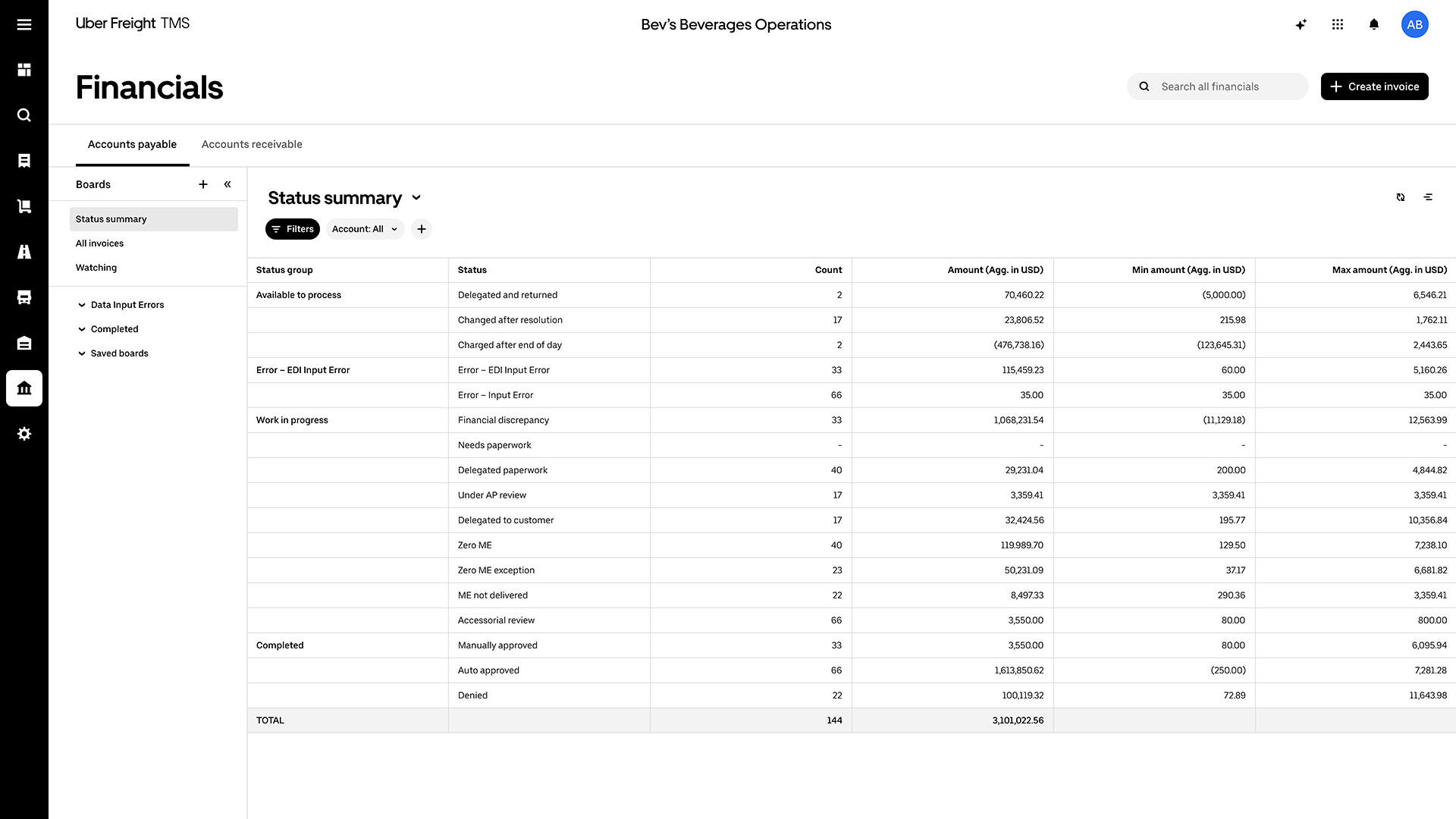
Looking ahead: The future of TMS innovation
The future of TMS also lies in the intelligent application of AI across the end-to-end load lifecycle. Uber Freight is at the forefront of this transformation, already automating manual processes, recommending opportunities to optimize shipments, and surfacing intuitive insights curated specifically for transportation teams and their unique supply chains. AI-powered applications are helping to supercharge decisions and accelerate desired business outcomes directly from our TMS.
In the coming months, we’ll be rolling out AI-powered search and AI-enhanced shipment execution, infusing our TMS with advanced capabilities that further boost its adaptability and efficiency. Imagine a TMS that not only responds to your commands but anticipates your needs—identifying potential issues before they arise and offering proactive solutions that keep your supply chain moving smoothly. That’s the future we’re building at Uber Freight.
Empowering shippers for the future
With these new enhancements, Uber Freight’s TMS is more than just a tool—it’s a strategic partner in your logistics journey. We’re providing shippers with a platform that is tailored to their unique and evolving needs, empowering them to navigate the complexities of modern supply chains with confidence.
As we look ahead, our commitment to innovation remains unwavering. We’re not just responding to the challenges of today; we’re anticipating the needs of tomorrow, ensuring that our shippers are always equipped with the best tools to thrive in an increasingly complex and dynamic logistics environment.
To learn more about Uber Freight TMS, please click here.





















